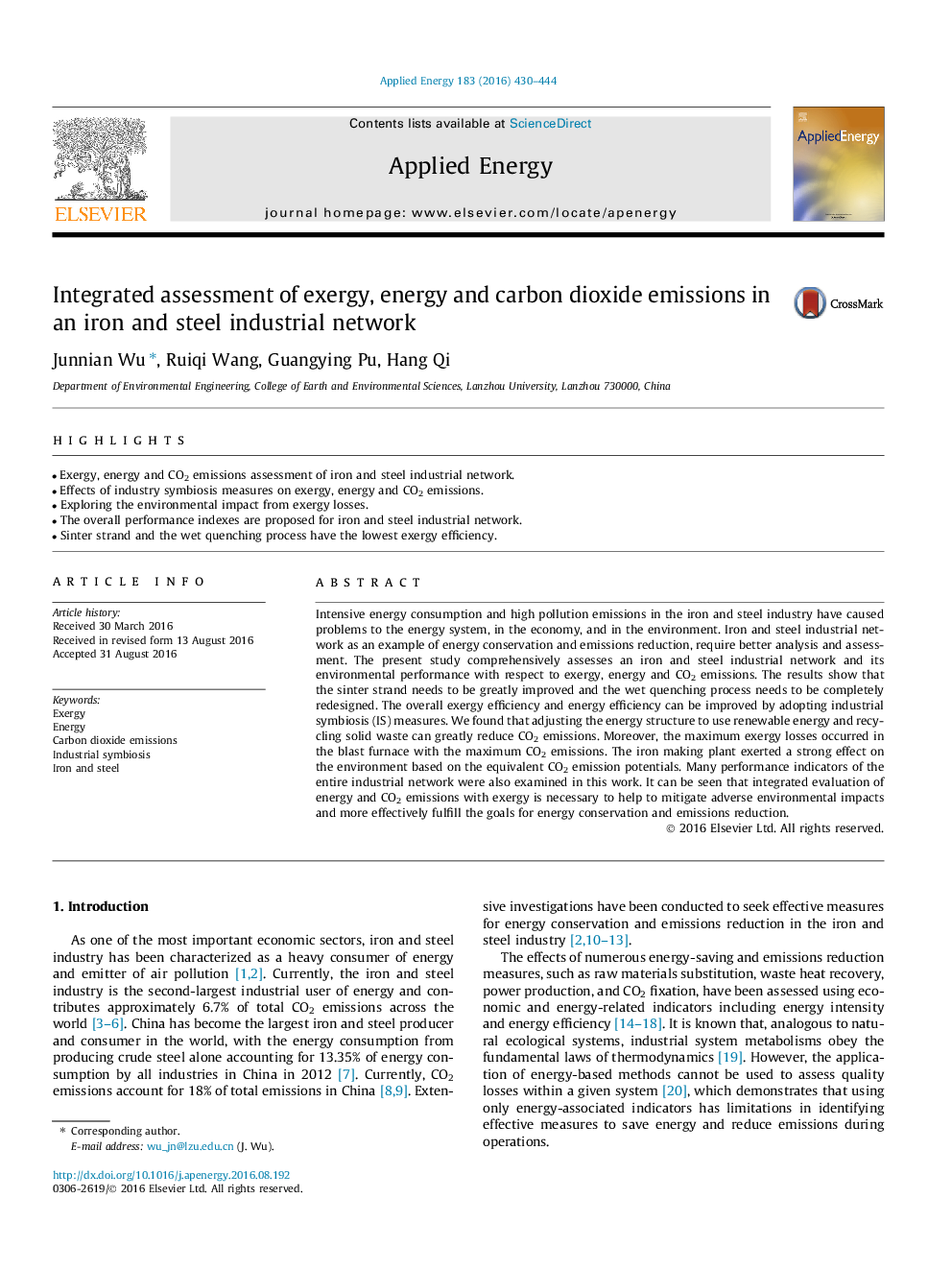| Article ID | Journal | Published Year | Pages | File Type |
|---|---|---|---|---|
| 4916587 | Applied Energy | 2016 | 15 Pages |
Abstract
Intensive energy consumption and high pollution emissions in the iron and steel industry have caused problems to the energy system, in the economy, and in the environment. Iron and steel industrial network as an example of energy conservation and emissions reduction, require better analysis and assessment. The present study comprehensively assesses an iron and steel industrial network and its environmental performance with respect to exergy, energy and CO2 emissions. The results show that the sinter strand needs to be greatly improved and the wet quenching process needs to be completely redesigned. The overall exergy efficiency and energy efficiency can be improved by adopting industrial symbiosis (IS) measures. We found that adjusting the energy structure to use renewable energy and recycling solid waste can greatly reduce CO2 emissions. Moreover, the maximum exergy losses occurred in the blast furnace with the maximum CO2 emissions. The iron making plant exerted a strong effect on the environment based on the equivalent CO2 emission potentials. Many performance indicators of the entire industrial network were also examined in this work. It can be seen that integrated evaluation of energy and CO2 emissions with exergy is necessary to help to mitigate adverse environmental impacts and more effectively fulfill the goals for energy conservation and emissions reduction.
Related Topics
Physical Sciences and Engineering
Energy
Energy Engineering and Power Technology
Authors
Junnian Wu, Ruiqi Wang, Guangying Pu, Hang Qi,
